Rainbow Springs State Park, Part 1 of 7
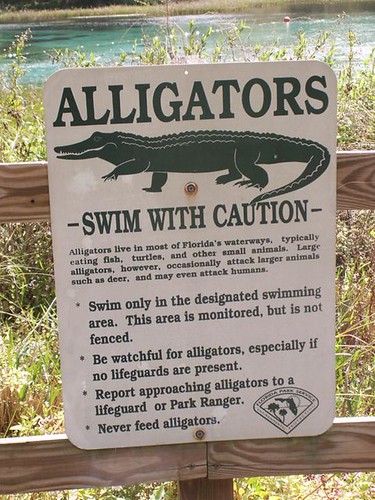
On March 13, 2006, Mary and I visited the Rainbow Springs State Park, which features the headsprings of the Rainbow River. The park's 1,595 acres contain at least 11 distinct, natural communities: mesic flatwoods, sandhills, scrubby flatwoods, sinkholes, upland mixed forests, basin swamps, depression marshes, floodplain swamps, and hydric hammocks.
This is a first magnitude spring complex, fed by four main vents. Its average flow is 465 million gallons per day. These waters run to the Withlacoochie River, through Lake Rousseau, and finally into the Gulf of Mexico.
Alligators form only a small part of the park's abundant wildlife....
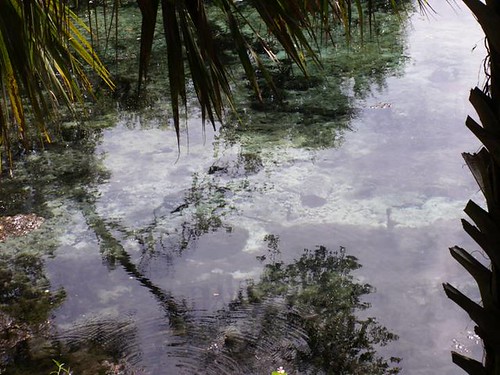
This day trip came courtesy of the Citrus County Camera Club/Digital Camera Group. I was in-between transcription marathons, so we jumped at the chance to see a natural highlight that I'd heard about some time ago but had not yet explored, despite our being only about a half-hour's drive away.
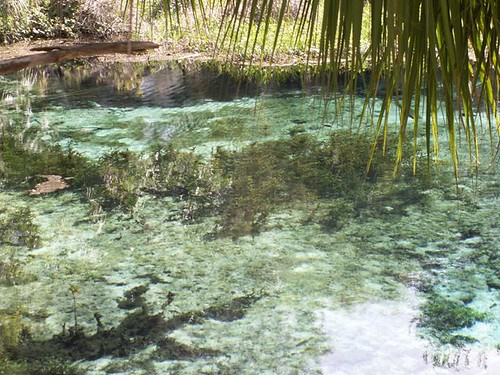
By the time we finished with our half-day there, I had taken around 150 photos and 3 movies. (All the movies were of the "boiling" action in the spring, witnessed by fish.) I've narrowed that down to a little less than one-third for posting online -- in installments.
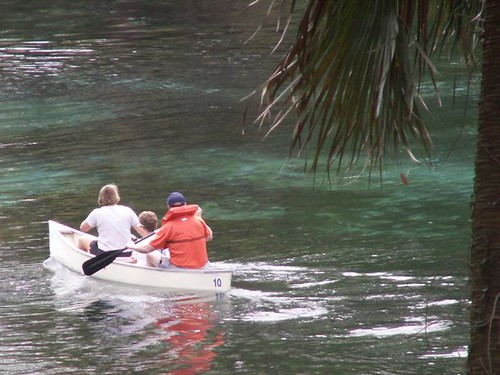
The springs are popular with swimmers, kayakers, canoeists, and campers. In fact, we'd first driven to the campground before we learned we were about six miles away from the day-park itself. At least now we know how to reach the campground in case we want to explore that part of the area. Back in 2001 we had spent a spectacular two weeks in an Appalachian Mountain Club cabin (no water or electricity) at the edge of Ponkapoag Pond in Blue Hills Reservation, eastern Massachusetts. In 1996 we'd gone truck-camping in Truro, on Cape Cod, in Mary's 1987 Ranger. The Ranger is still running strong, and we've talked about using it for more camping expeditions.
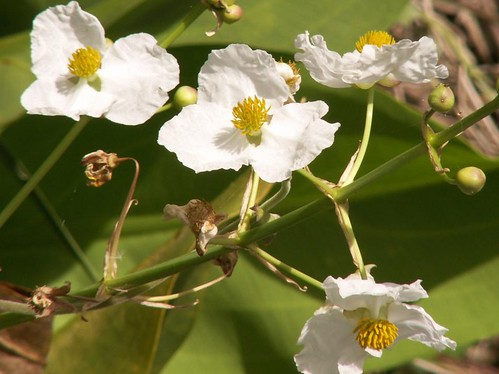
We were told that these are called "alligator flag," because gators can be found where they appear. A Web search shows that the term can apply to several different kinds of plants. The only image I found that matches this one came from a Vietnamese site. Most other sites list as alligator flag a plant called Red-stemmed Thalia (Thalia geniculata), but those flowers are purple/blue.
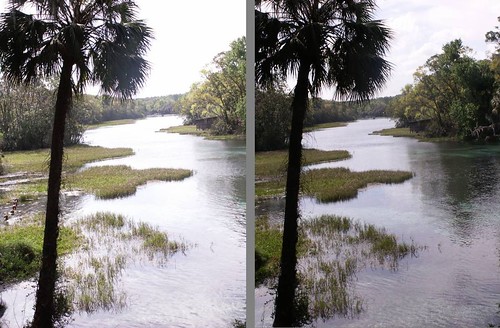
Crosseye stereogram. To obtain a 3-D effect, cross your eyes slightly, relaxing your gaze as you focus on the "center" image. (Not everyone can do this.) This is the view from outside the Visitor's Center. In addition to shifting my position slightly between one shot and the next to create a stereoscopic effect, I shot the image on the left using a 1/1000-second exposure at f/3.2, and that on the right using a 1/200-second exposure at f/8.
Says the park's brochure, "The magnificent azalea bloom in early spring attracts visitors from around the country." The place was in full flower when we arrived. Blossoms to come!











1 Comments:
When I was about four, my very pregnant mother and I were swimming in the Zambesi River. My Dad was on the bank, napping. He'd been gazing at us in the river and there was a log drifting nearby, he'd been looking at it for about an hour. He said it was intuition alone, but he suddenly jumped up and shouted at us to get out, and as soon as we were on the bank he shot the "log." It was a big crocodile. I remember watching the swirling water for a long time. So I was nearly eaten by one of those critters at one time! I have an awe and respect and a little fear for them. Would I go into "alligator" water with a sign like that no matter how hot it was or how safe it seemed? Oh, that's a hard one! Looks like a most beautiful spot, though!
Post a Comment
<< Home